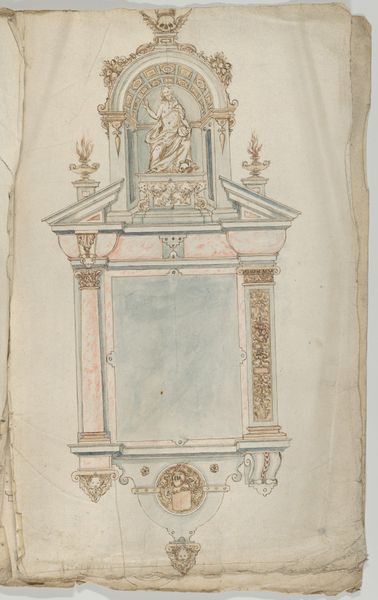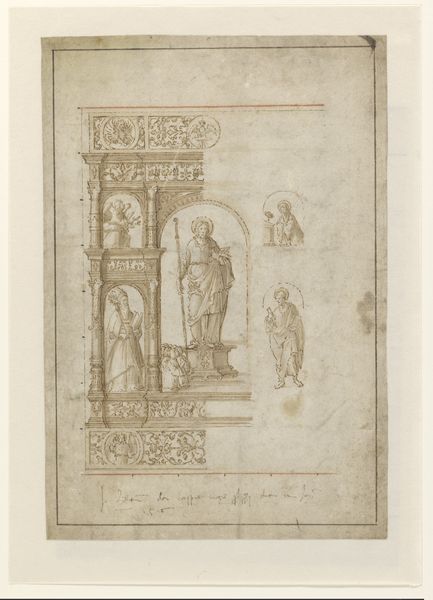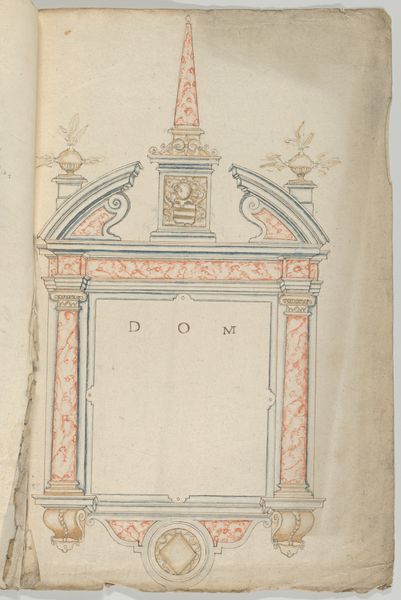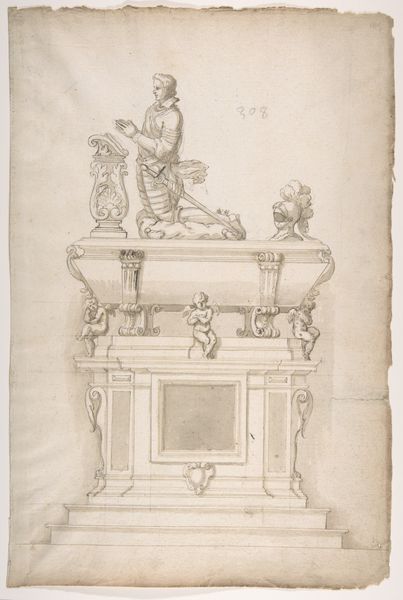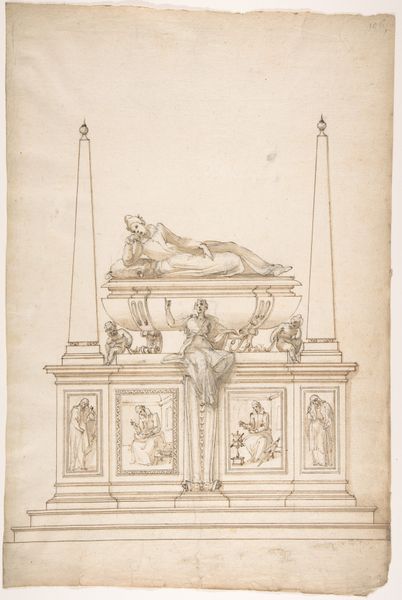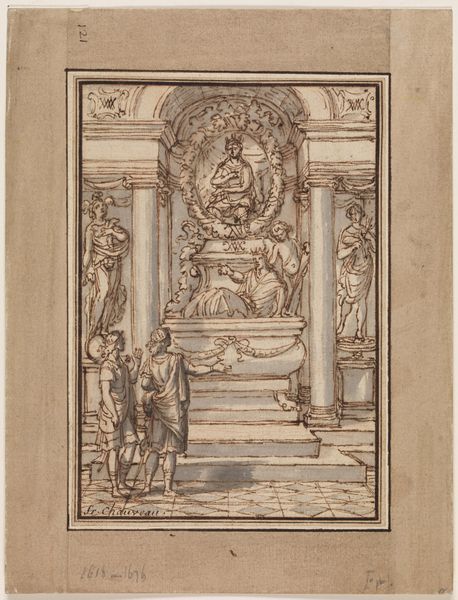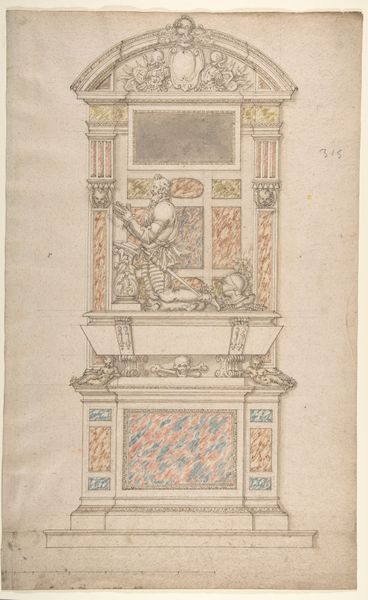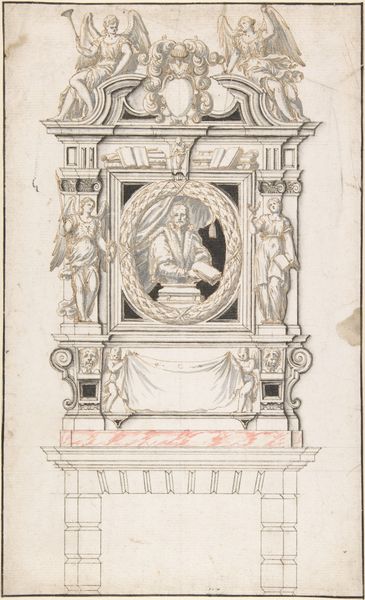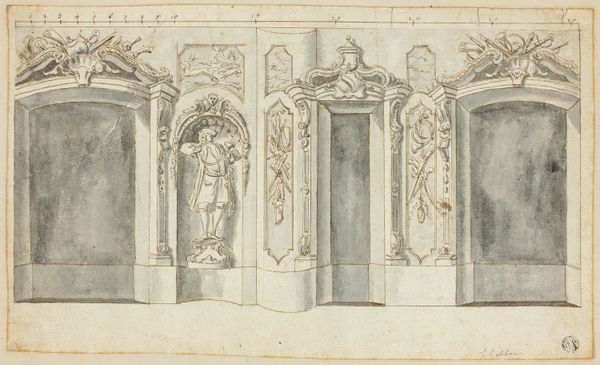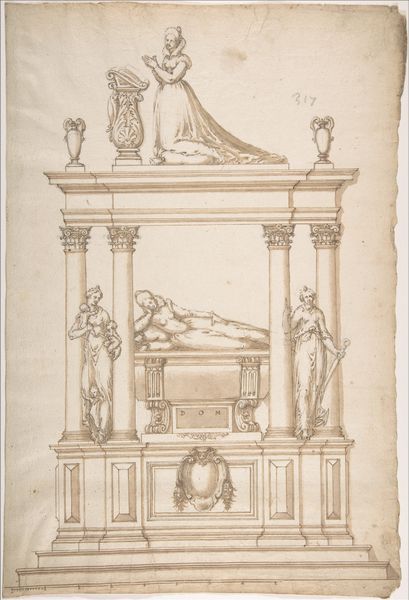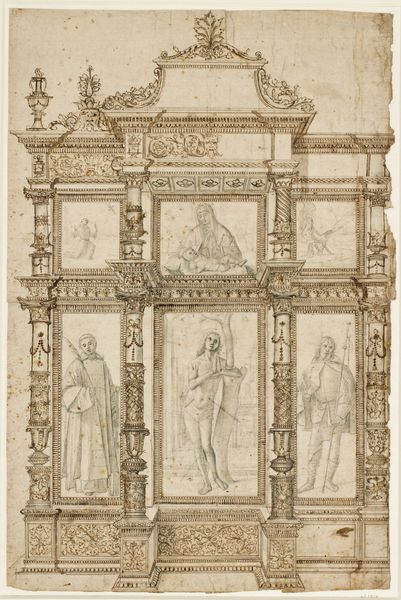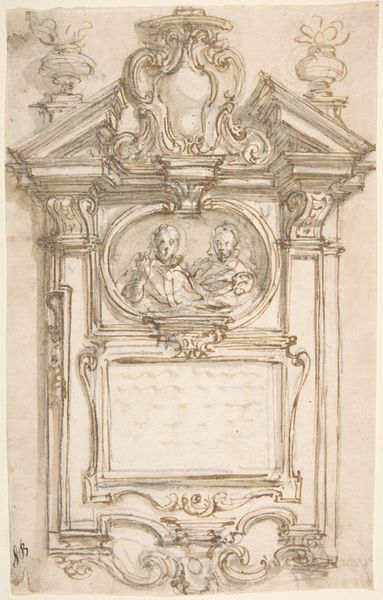
Design for a Wall Tomb with a Variant and Statues of the Resurrected Christ and a kneeling Donor 17th century
0:00
0:00
drawing, print, fresco, watercolor
#
portrait
#
drawing
#
baroque
# print
#
etching
#
figuration
#
form
#
fresco
#
watercolor
#
cross
#
line
#
history-painting
Dimensions: Sheet: 15 7/8 × 9 13/16 in. (40.3 × 25 cm)
Copyright: Public Domain
Editor: This drawing, "Design for a Wall Tomb with a Variant and Statues of the Resurrected Christ and a kneeling Donor," comes from the 17th century and is currently held at The Met. The subdued watercolors create an ethereal feel. What’s striking to me is the somewhat unsettling combination of religious iconography and architectural monumentality. How do you interpret this piece? Curator: It’s a powerful tension, isn't it? The drawing allows us to explore the complex relationship between religious devotion and social power during the Baroque era. The kneeling donor, dwarfed by the resurrected Christ and the elaborate tomb design, highlights the patron's desire for earthly recognition and eternal salvation. It makes you consider, who gets to commission art, and what statements are they making with these choices? Editor: That makes sense. It’s like the tomb becomes a stage for performing piety. But what about the skulls? It seems like a strong statement of mortality that somewhat goes against celebrating immortality, right? Curator: Absolutely. The vanitas symbols – the skulls – are reminders of the fleeting nature of earthly life. But think about it further: who typically got monumental tombs in this era? Aristocrats. Nobility. Patrons like the one depicted. What is being celebrated here? The drawing prompts us to analyze the intersection of faith, class, and artistic representation within the socio-political context of 17th-century Europe, it makes one think about how such works were and continue to be intertwined in networks of gender and race. Do you see those social commentaries represented here, even indirectly? Editor: Now that you point it out, I can see how this isn't *just* a religious image; it's deeply embedded in power dynamics. Curator: Precisely. It also makes us reflect on the role of art in shaping and perpetuating social hierarchies, both then and now. Editor: It’s really opened my eyes to how much context shapes the meaning of art. Thanks for that insightful view. Curator: My pleasure! Always remember that artworks are not isolated objects. They are products of their time, reflecting the complex social, political, and religious landscapes in which they were created.
Comments
No comments
Be the first to comment and join the conversation on the ultimate creative platform.
